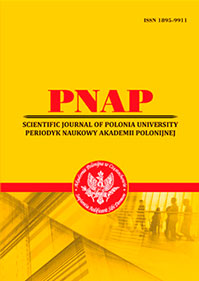МОРФОЛОГІЧНІ ХАРАКТЕРИСТИКИ АНГЛІЙСЬКОЇ МОВИ ЯК ОСНОВА СЛОВОТВОРЧОГО ПРОЦЕСУ
Анотація
З моменту винайдення мовних систем усі мови світу підвладні постійним змінам: змінюються слова, деякі вимирають, а нові слова винаходяться або видозмінюються знову і знову. Розширення словникового запасу неможливо уникнути, оскільки різноманітні об’єкти, критерії, стани, терміни, способи дії, контексти, події тощо завжди мають бути описані та номіновані. У лінгвістиці цим явищем займається галузь морфології. Морфологія досліджує побудову словоформ і слів, опрацьовує комбінаторику таких одиниць, як основи і афікси, виводить значення складних слів ідентифікує те, на основі яких механізмів виникають нові слова. Слова є основою мови. На морфологічному рівні слова складаються з однієї чи кількох морфем. Морфеми, які з грецької означають форму, вид, — це найменші одиниці мови, що мають значення або граматичну функцію, на які можна розкласти слово. У статті ми наочно описуємо англійські морфеми в їх функціональному (граматичні та лексичні) та структурному аспекті (вільні та зв’язані), а також флективні та похідні, або дериваційні, морфеми. Робота окреслює дослідження слова і його будови, акцентуючи на найменших змістовних частинах, на які можна слово розділити. Окрім морфологічних, стаття прослідковує смислові ознаки морфем. Також ми наводимо порівняльну таблицю флективних та дериваційних афіксів англійської мови. Далі ми виокремлюємо вісім флективних морфем та описуємо дериваційні морфеми — суфікси і префікси. Під час написання статті були застосовані такі методи: метод суцільної вибірки із лексикографічних джерел; аналіз словникових дефініцій та словотвірних моделей; інформаційно-пошуковий метод для відбору матеріалу дослідження; контекстуальний, функціональний та метод аналізу словникових дефініцій для простеження лінгвопрагматичних особливостей англійських неологізмів; метод дедукції та індукції для підсумування даних і формулювання висновків роботи; метод компонентного аналізу для позначення семантичного наповнення досліджуваних неологізмів. Головне завдання статті – закласти основу для вирішення лінгвістичної проблеми морфології, що базується на концепції морфологічної структури та чіткій диференціації її компонентів.
Посилання
2. Блох М. Я. Теоретическая грамматика английского языка. Москва : Высшая школа, 2003. 241 с.
3. Блох М.Я. Теоретические основы грамматики. Москва : Высшая школа, 1986. 159 с.
4. Жаборюк О.А., Архіпова Н.П. Когнітивно-комунікативне підґрунтя класифікації простого речення. Записки з романо-германської філології. 2009. № 24. С. 71–82.
5. Клименко О.Л. Поповнення словникового складу сучасної англійської мови з нелітературних підсистем : дис. … канд. філол. наук : 10.02.04. Запоріжжя, 1999. 198 с.
6. Раєвська Н.М. Теоретична граматика сучасної англійської мови. Київ : Видавництво державного університету, 1968. 352 c.
7. Харітонов І.К. Теоретична граматика англійської мови. Вінниця : Нова книга, 2008. 352 с.
8. Berg T. Right-branching in English Derivational Morphology. English Language and Linguistics. 2003. Vol. 7. № 2. P. 279–307.
9. Chomsky N. Aspects of the Theory of Syntax. Cambridge Massachusetts : M. I. T. Press, Massachusetts Institute of Technology, 1965. 251 p.
10. Lallot J. Aorist (aóristos), Ancient Theories of. Encyclopedia of Ancient Greek Language and Linguistics / ed. by G.K. Giannakis. 2014. Vol. 3. P. 6–8.
11. Plag I., Dalton-Puffer C., Baayen R.H. Morphological productivity across speech and writing. English Language and Linguistics. 1999. №. 3. P. 209–228.
12. Strauss S., Feiz P., Xiang X. Grammar, Meaning, and Concepts: A Discourse-Based Approach to English Grammar. Taylor & Francis Ltd, 2018. 478 p.
 ISSN
ISSN 


.png)



